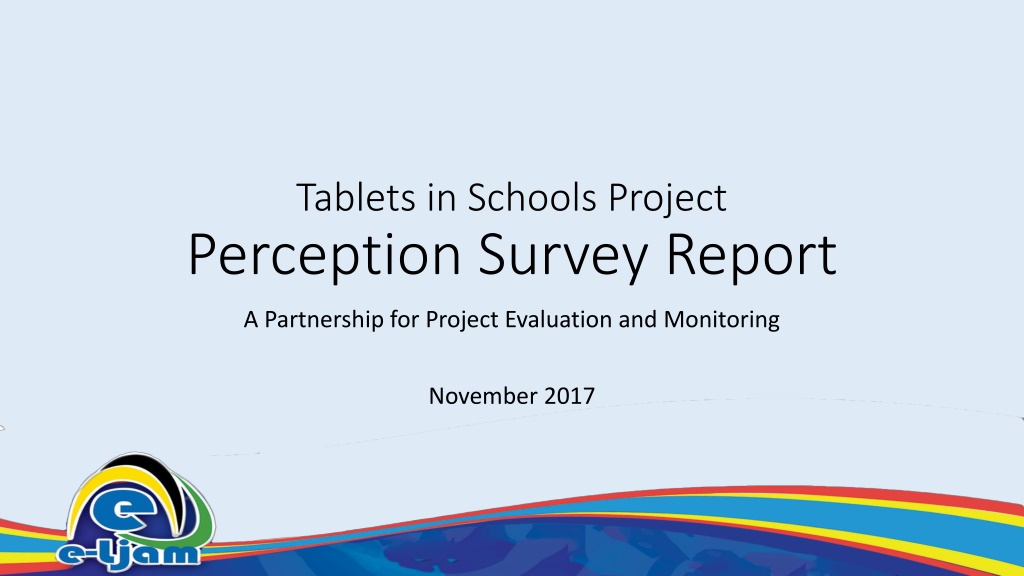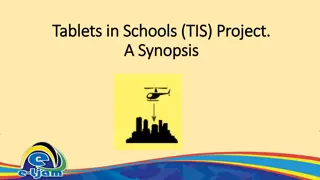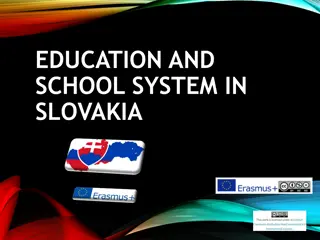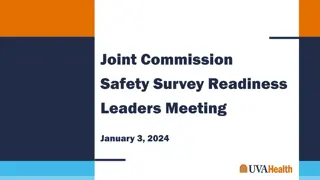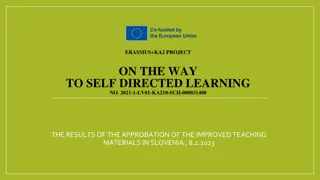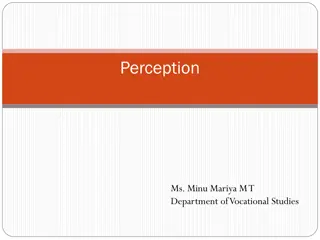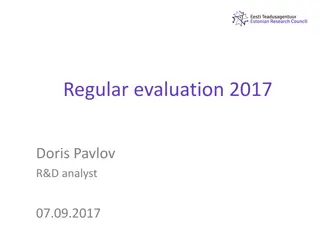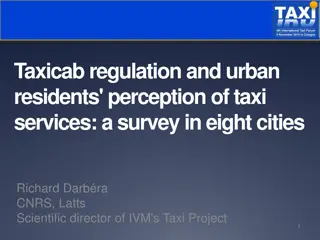Tablets in Schools Project Perception Survey Report - Evaluation and Findings
Leadership plays a crucial role in driving innovation in education, with teachers having the potential to support student achievement through technology integration and skills development. The report highlights concerns regarding numeracy performance, the availability of facilities such as internet and storage, and the need for strategic analysis to address areas of improvement.
Download Presentation

Please find below an Image/Link to download the presentation.
The content on the website is provided AS IS for your information and personal use only. It may not be sold, licensed, or shared on other websites without obtaining consent from the author. Download presentation by click this link. If you encounter any issues during the download, it is possible that the publisher has removed the file from their server.
E N D
Presentation Transcript
Tablets in Schools Project Perception Survey Report A Partnership for Project Evaluation and Monitoring November 2017
Summary Leadership is key in innovation; teachers have the potential to override inadequate parental and community supports for values transformation, for literacy and numeracy achievement, through upskilling, and developing positive attitudes to the use of technology, including print materials. A few institutions are reporting significant improvements in achievement through goal setting. Some designs, such as multigrade approaches have questionable utility, with current technology levels.
Satisfaction Indices 2.37 2.55 lo hi lo hi
Student Performance Issues Numeracy a major concern in primary grades
Survey Demographics Leadership profile Tech activity Facilities Students Teachers Opportunities and challenges
Facilities---power>internet>storage 146 Responses 113 (77.4%) Internet at school Internet available 111 (76%) Cable in area 93 (63.7%) 28 (19.2%) Cable in school Telephone - mobile 104 (71.2%) 27 (18.5%) Telephone - via 101 (69.2%) Telephone Service Electrical Power 142 (97.3%) Secure Storage 105 (71.9%) 0 20 40 60 80 100 120 140 160
Analysis and reporting Commonalities Uniques Tendencies which suggest areas of concern Can impact tactics, training priorities, sequence of activities Summaries will be shared with you
MOEYI Region 146 Responses School Classification MOEYI Region 3.4% 9.6% 15.8% 17.1% 39.7% 15.8% 13.7% 22.6% 9.6% 28.1% 24.7% 1 2 3 4 5 6 Grade 1 Grade 2 Grade 3 Grade 4 Grade 5
Teacher Capacity MS Word >>Powerpoint>Excel - Applied skills uniformly low
Current situation with equipment Desktops, Laptops , projectors >>>Tablets, video recorders
Principals profile Self-taught, social media, smartphone, computer
Principals profile Self-taught, social media, smartphone, computer Chart Title 140 120 100 80 60 40 20 0 Diploma only Bachelor's Masters or above Yes No
Issues , Goals and Values Literacy Numeracy Citizenship Innovation Creativity
Approach to analysis---key categories Client variables Parent, student, community Institutional variables Leadership, teacher, financing Project input variables Technology, materials, training "a systematic, replicable technique for compressing many words of text into fewer content categories based on explicit rules of coding".
Literacy Priorities for change Student >Parent> Technology/material>>Teacher>SES>Leadership
Literacy Sample responses for inhibiting factors Creole interference Multigrade Teacher competence Student interest Low home support Teachers innovation
Literacy Student Interest Knowledge Institutional Teacher Organizational Parent Support Poverty Nutrition Technology/Materials
Literacy Uncontrollables higher than controllables Teacher and leadership, technology and materials have to make a difference
Numeracy Client variables Institutional variables Teacher Student Fear Parent Project Content/materials
Numeracy Priorities for change Content/material >student,teacher >parent >fear of subject
Numeracy Key Question Is there no explicit role for school leadership in numeracy transformation? Client variables, teacher variables and materials/ technology very important
Citizenship---inhibitors Parent Community/peers Self/student Curriculum/Stimuli Teacher School organization/leadership Role models
School innovation Institutional variables Leadership Project variables Technology Teacher Software Fear Broadband
Technology Innovation--inhibitors Technology/broadband >leadership >teacher >>fear
Innovationverbatim reports from you Fear of technology Poor leadership Retooling principal Proper training Low competence level Fear factor Unwillingness to embark on new ICT Age Teacher over 45 resisting change Principal Willing to learn Phobia for IT Lack of will Leader might not be technology savvy Main factor is a lack of ..devices..principal and teachers willing MINDSET
